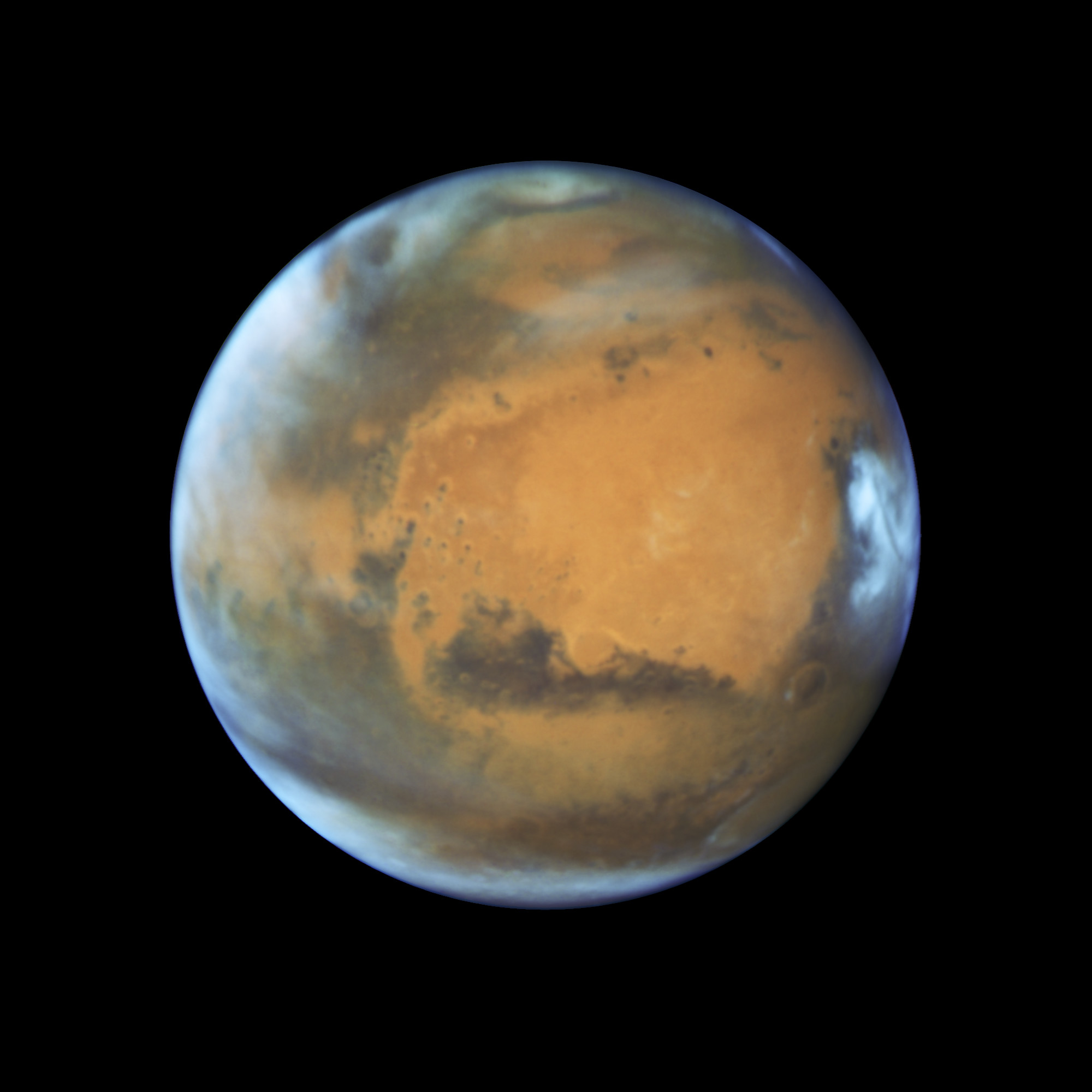Hubble's Decades-Long Look at Mars Reveals Much About the Red Planet (Video)

Mars is at opposition with the Earth this Sunday (May 22), meaning the Red Planet and sun will be on directly opposite sides of the Blue Marble.
In celebration of this event, the Hubble Space Telescope snapped a new picture of Mars. The image shows a hazy blue rim around the dusty orange sphere. Space.com spoke with Jennifer Wiseman, a NASA Hubble senior scientist, about the benefits of observing Mars with different instruments, and the insights that Hubble has given scientists about our own solar system.
"With telescopes like Hubble we actually get a global view of the planet," Wiseman said. For Mars, those global observations can then be combined with observations by instruments orbiting the planet, as well as those on its surface. "And we need all of this information together to give us an idea of what's going on on Mars now, and what Mars was like in the past, as well." [Mars at Opposition: See the Red Planet with Your Own Eyes This Weekend]
The new Hubble image shows a wide variety of features on the Martian surface. The large orange region in the center is known as Arabia Terra, and is thought to be extremely old. Check out this video from Space.com to see the names of more of the physical features that appear in the new Hubble image.
"You can see clouds around the whole planet and that's what you're seeing in that kind of wispy bluish white color," Wiseman said. "Off to the right-hand side you can see the clouds surrounding an extinct volcano. And you can also see the polar regions clearly. So this image actually gives us a huge variety of features that we can see."
The Hubble telescope has produced incredible images of very distant cosmic objects, including thousands of galaxies, as well as gorgeous nebulas, and other jaw-dropping universal features.
But Hubble has also unearthed incredible new information about Earth's solar system.
Get the Space.com Newsletter
Breaking space news, the latest updates on rocket launches, skywatching events and more!
"Hubble has been operating for over 26 years now and that means we have a long time-baseline of looking at planets in the solar system, including Mars." Wiseman said. "Because of this wealth of information, we can see how the planet as a whole changes over time. For planets like Jupiter, we've seen its atmosphere change, that red spot shrinking. For Saturn, we've seen things like the aurora on the poles come and go. We've even used Hubble to discover new moons around Pluto that we didn't know about before."
On Mars, scientists have seen dust storms completely blanket the planet's surface.
"It shows us that Mars is a very dynamic planet and we need that long time-baseline that Hubble has given us to really understand those dynamics," Wiseman added.
[Editor's Note: This opposition will not be Mars' closest approach to Earth this year, as this article previously stated.]
Follow Calla Cofield @callacofield.Follow us @Spacedotcom, Facebook and Google+. Original article on Space.com.
Join our Space Forums to keep talking space on the latest missions, night sky and more! And if you have a news tip, correction or comment, let us know at: community@space.com.

Calla Cofield joined Space.com's crew in October 2014. She enjoys writing about black holes, exploding stars, ripples in space-time, science in comic books, and all the mysteries of the cosmos. Prior to joining Space.com Calla worked as a freelance writer, with her work appearing in APS News, Symmetry magazine, Scientific American, Nature News, Physics World, and others. From 2010 to 2014 she was a producer for The Physics Central Podcast. Previously, Calla worked at the American Museum of Natural History in New York City (hands down the best office building ever) and SLAC National Accelerator Laboratory in California. Calla studied physics at the University of Massachusetts, Amherst and is originally from Sandy, Utah. In 2018, Calla left Space.com to join NASA's Jet Propulsion Laboratory media team where she oversees astronomy, physics, exoplanets and the Cold Atom Lab mission. She has been underground at three of the largest particle accelerators in the world and would really like to know what the heck dark matter is. Contact Calla via: E-Mail – Twitter









